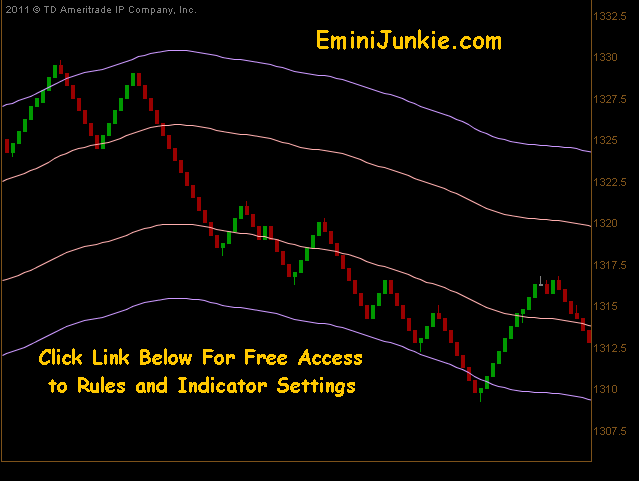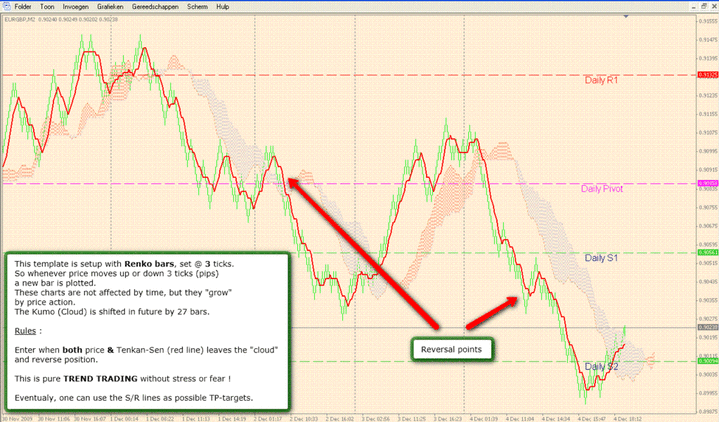A Simple Strategy for Day Trading
Post on: 13 Июнь, 2015 No Comment

February 21, 2010 By Kenny
Today I’d like to welcome Markus Heitkoetter from Rockwelltrading.com. Markus’ article below dives into what most traders just don’t get. Enjoy the article, comment below, and visit Rockwelltrading.com to see what Markus’s next webinar event is.
==================================================================
With dozens of indicators, hundreds of chart patterns, and thousands of combination’s between the two, it’s no wonder that many traders struggle to find and enter trades with confidence. “Analysis paralysis” is a common problem for many traders, and it can even keep experienced traders from taking good trades. It’s easy to plot a dozen indicators on your chart, but what are they really telling you? Are you able to make split second decisions when there is an opportunity in the market? If not, it’s probably time to simplify your trading.
One of the easiest ways I’ve found to keep things simple, and avoid being a victim of analysis paralysis, is to use a strategy that I call, The Simple Strategy.
This strategy is a trend following strategy that identifies entries in trending markets. Although this strategy should work in any market, as a day trader I prefer to trade the futures markets. My markets of choice are:
- 30 Year T-Bonds
The Simple Strategy is based on 2 popular indicators: MACD & Bollinger Bands. Using MACD, I rely on the following standard settings to identify the trend of the market:
- 26 for the slow moving average
- 12 for the fast moving average
- 9 for the moving average of MACD (known as the “trigger” or “signal” line)
MACD is a very powerful indicator. To confirm strong trends in a market, I look for the following conditions:
- An uptrend is present if MACD is above its signal line AND above the zero line.

- A downtrend is present if MACD is below its signal line AND below the zero line.
By waiting for MACD to be above or below the zero line, we can avoid being whipsawed when a market isn’t in a clear trend.
MACD helps us identify the direction of the market, but our actual entry point is going to be based on Bollinger Bands. The Simple Strategy uses the following Bollinger Band settings:
- 12 for the moving average
- 2 for the standard deviation
When price tags an upper or lower Bollinger Band, we usually see a continuation of a trend. Using MACD to identify the direction of the market, we look for entries when price is tagging or pushing through a Bollinger Band. This gives us the following entry rules:
- Long entry with a buy stop order at the value of the upper Bollinger Band, if the market is in an uptrend based on MACD.
- Short entry with a sell stop order at the value of the Lower Bollinger Band, if the market is in a downtrend based on MACD.
With stop orders at the value of the Bollinger Band we will ONLY be triggered if price pushes through the Bollinger Band. Using Bollinger Bands as our entry point we can stay out of markets that are ranging from upper to lower band, and avoid many “false signals”.
Now that we have our entry rules down, we need to know when to get out of a trade. Our Simple Strategy uses volatility-based exits by keeping track of the Average Daily Range. Our goal is to accommodate different market conditions by using stop losses and profit targets that adjust to the ranges of the market we are trading.
The Average Daily Range (ADR) is simple to calculate. To calculate ADR on your own, find the average range (difference between session high and session low) over the last 7 days (total range for 7 days divided by 7).
Once we have the ADR we can calculate our stop loss and profit target.
• Stop Loss = 10% of the ADR
• Profit Target = 15% of the ADR
If we’re trading the E-mini S&P 500 and the ADR was 20, our stop loss would be 2 points (20x.10) and our profit target would be 3 points (20x.15). Although there will be times when the market continues to trend, I personally always use set exits so I can take profits before the market goes against me. In addition to an ADR stop loss and profit target, I want to get out of a trade when the market is no longer trending. An easy way to determine when the market is no longer trending is to go back to the MACD indicator. When MACD crosses back below the trigger line in an uptrend, or back above the trigger line in a downtrend, I’ll go ahead and exit a Simple Strategy trade.
The Simple Strategy can be traded on any intraday timeframe. Traders that I work with have shared decent results on 5 minute and 15 minute charts, but my preference isn’t a timeframe at all. Instead I use range bars.
The Simple Strategy is an easy strategy to understand and execute. Once you know the basics, consider adjustments depending on your trading personality and experience; like scaling in and out, using trailing stops, and by using Pivot Points for support and resistance.
If you are interested in learning more about the day trading strategies we use at Rockwell Trading, I’d like to invite you to an exclusive webinar available only for INO traders:
All the best in your trading.
Markus Heitkoetter, CEO Rockwell Trading
Markus is a professional day trading coach and author of the international bestseller “The Complete Guide to Day Trading”.














